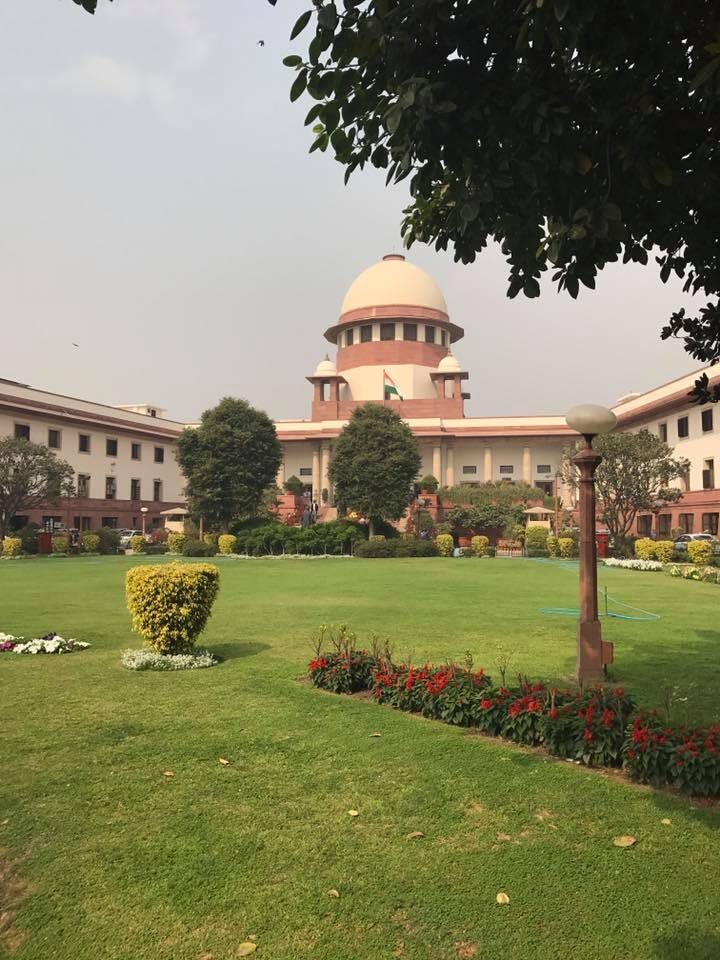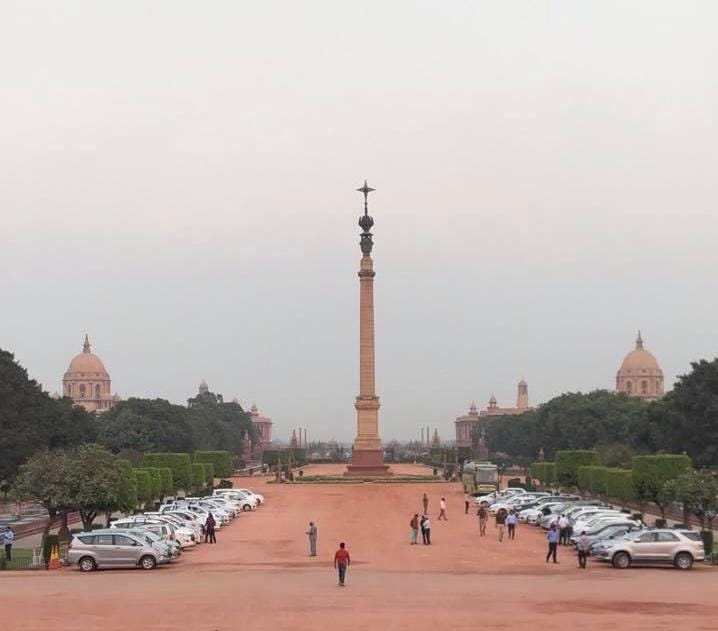10 Reasons Why Modi Will Not Formally Declare India as a 'Hindu Rashtra'
Our Analysis on the Occasion of the 75th Republic Day.
Setting the Stage: The Debate on India's National Identity
As we commemorate the 75th Republic Day today, a significant segment of observers, often labeled as pseudo-intellectuals, argue that India is progressively transforming into a “Hindu Rashtra.” Some even suggest that this shift has already occurred in spirit, if not in formal legal and constitutional terms. This article aims to robustly challenge this perspective, presenting ten logical, cogent, and legal reasons to support the assertion that neither the Modi Government nor the RSS will find it easy to openly espouse India's official classification as a “Hindu Rashtra,” regardless of their internal convictions.
1. Demographic Considerations and Minority Rights
While Hindus broadly account for approximately 80% of India's population, a formal declaration of India as a “Hindu Rashtra” would, theoretically, necessitate devolving a significant proportion of resources, territory, or power to the remaining 20% belonging to other religious minorities. This could potentially lead to demands for more than just reserved representation in the Lok Sabha and Vidhan Sabha. Minorities might seek separate electorates, echoing the divisive policies experienced during the British Raj, which culminated in the Partition of the country at Independence in 1947. Such developments could rekindle fissiparous tendencies detrimental to the nation's unity.
2. International Implications and the Value of Secularism
India's standing as a sovereign, secular, socialist, and democratic Republic resonates strongly with the current global paradigm that champions democracy. Adopting the formal title of a “Hindu Rashtra” would not only be incongruent with these values but also send a detrimental signal to the international community. Even if, in practice, India leans towards a Hindu-majority narrative, officially declaring it as such in the Constitution would be counterproductive. Instead, it is more strategic to further emphasize India's secular credentials. This approach is akin to how North Korea highlights its democratic polity, or how the satellite states of the erstwhile USSR portrayed themselves as democracies in Eastern Europe, showcasing a facade that aligns with global expectations.
3. Judicial Constraints and the Basic Structure Doctrine
The Keshavananda Bharati judgement by the Supreme Court of India, which established the doctrine of the basic structure of the Constitution, poses a significant legal hurdle. While the 'basic features' of the Constitution haven't been exhaustively defined, there is a near-consensus that democracy, republicanism, and secularism are its immutable and unalterable pillars. Consequently, amassing a majority in a Supreme Court Bench larger than 13 judges – effectively, at least 15 judges – to uphold a change as sweeping as declaring India a “Hindu Rashtra” would be an extraordinarily daunting challenge in the current era.
4. Internal Diversity and the Challenge of Defining 'Hindu'
Numerous communities, particularly among tribal groups and Scheduled Castes, currently classified as Hindus, might contest their inclusion in the broader Hindu fold. They may seek distinct recognition, separate from mainstream Hindu identity. Such a movement would not only challenge the homogeneity of the Hindu demographic but could also significantly reduce its numerical majority. This, in turn, would undermine the legitimacy and rationale for proclaiming India as a “Hindu Rashtra,” highlighting the complexities within the very definition of Hinduism in the country's diverse social fabric.
5. Constitutional Safeguards for Minorities in a 'Hindu Rashtra'
The Indian Constitution uniquely bestows certain Fundamental Rights specifically to religious and linguistic minorities, rights not extended to the majority community. These are encapsulated in the Cultural and Educational Rights under Articles 29 and 30. In the hypothetical scenario of transitioning to a “Hindu Rashtra,” these rights would need to be not just maintained but potentially reinforced. This reinforcement would be essential to ensure that these minority sections of Indian citizens remain integrated and their rights protected within the framework of a new Indian republic officially identified as a “Hindu Rashtra.”
6. Constitutional Interpretations and Religious Identities, Especially the Sikhs
Article 25 of the Indian Constitution, particularly its Explanation 2 for sub-clause (b) of clause (2), categorizes Jaina, Buddhist, and Sikh faiths under the Hindu umbrella. This classification serves primarily as a legal framework for addressing issues like untouchability and access to public places of worship for Scheduled Castes across these religions. However, in the early 1980s, this was misinterpreted by some to suggest that the status of the Sikhs, being a distinct religion, was being negated by this constitutional categorization. It's imperative to understand that Sikhs are officially recognized as a separate religion, distinct from Hinduism. This is notably clarified by Explanation No. 1 to Article 25, which explicitly acknowledges the Sikh right to carry kirpans as an essential aspect of their faith. Hence, the constitutional privilege of carrying kirpans is distinctively and unequivocally articulated in respect of those professing the Sikh faith, delineating their unique religious identity separate from the broader Hindu, Jaina, and Buddhist traditions.
7. The Uniform Civil Code Dilemma in a 'Hindu Rashtra'
Initiating the establishment of a “Hindu Rashtra” would starkly contradict the Central Government's current efforts to implement a Uniform Civil Code (UCC). The UCC, justifiable on various grounds including its alignment with practices in modern western democracies, aims to standardize personal laws irrespective of religion. However, if India were to be declared a “Hindu Rashtra,” it could raise suspicions of the Hindu personal laws being imposed on other religious communities in matters of marriage, succession, adoption, guardianship and divorce. This potential perception would create an untenable position both legally and logically, and pose significant ethical dilemmas, undermining the very essence of the UCC’s objective of uniformity and fairness across religions.
8.The Risk of Fragmentation within Hinduism
At first glance, Hinduism and 'Sanatan Dharam' might appear as a singular, homogenous faith and way of life. However, the reality is far more complex, with the religion exhibiting a rich tapestry of diverse strands, particularly between the regions north and south of the Vindhyas. Notable differences exist even among followers of the same faith, such as the devotees of Lord Shiva and Lord Vishnu, both central to the Hindu Trinity. Proposing a “Hindu Rashtra” risks not only dividing Hinduism along these intricate lines but could also potentially escalate to demands for separate nationhood in parts of Southern India. This scenario, akin to a second partition, is fraught with grave risks and uncertainties that could spiral out of control. It represents a significant gamble that neither active nor passive proponents of a “Hindu Rashtra” would likely be willing to undertake, considering the profound implications for national unity and integrity.
9. Geostrategic Concerns and the Sikh Community's Response
The prospect of a “Hindu Rashtra” is likely to be met with considerable opposition from the Sikh community, notably in Punjab. Despite constituting only about 1.5% to 2% of the national population and occupying a relatively small geographical area, the strategic location of Punjab and the concentrated Sikh population therein imbue significant influence. A move towards a “Hindu Rashtra” could inadvertently fuel divisive sentiments, threatening the unity of the Indian Republic – a scenario unwelcome by both Sikhs and non-Sikhs alike, within Punjab and beyond. Furthermore, this risk must be evaluated in the context of Punjab's proximity to the union territories of Jammu and Kashmir, where Muslims form the demographic majority, adding another layer of complexity to the regional dynamics.
10. Advocating for Authentic Secularism in India
India's identity as a secular state is etched and encoded into the DNA of the republic, an ethos enshrined by the Founding Fathers of the Indian Constitution. This secularism must be preserved to maintain the nation's political and socio-economic identity. While there has been a tendency for minority appeasement policies from 1947 until 2014, the measures taken by the Modi Government to recalibrate towards genuine secularism are fully justified. This shift, though criticized in some quarters, is a step towards authentic secularism, countering the previous trend of pseudo-secularism where certain minority groups received disproportionate attention and resources, a practice not aligned with the Constitution's intent. The ongoing case of Aligarh Muslim University, a centrally funded autonomous institution, in the Supreme Court, will be a crucial indicator of how these principles are upheld and interpreted in the contemporary context.
Embracing Secularism for India's Bright Future
As the Republic of Bharat strides into its 75th year, its identity as a sovereign, socialist, secular, and democratic republic remains paramount. The Nation's journey ahead necessitates a reinforced commitment to its secular ethos, both in principle and practice. This involves not only moderating the calls for a “Hindu Rashtra” but also recalibrating any policies that overly appease specific minorities. Such a balanced approach is crucial for India's continued growth and leadership. Embracing this path of genuine secularism positions India to not only be a thought leader but also to assert its role as a significant player in international politics, particularly in South Asia and the Indian Ocean region. This stance aligns with the vision of a harmonious and progressive nation, leading by example in the global community.
Jai Hind!
Jai Bharat!







